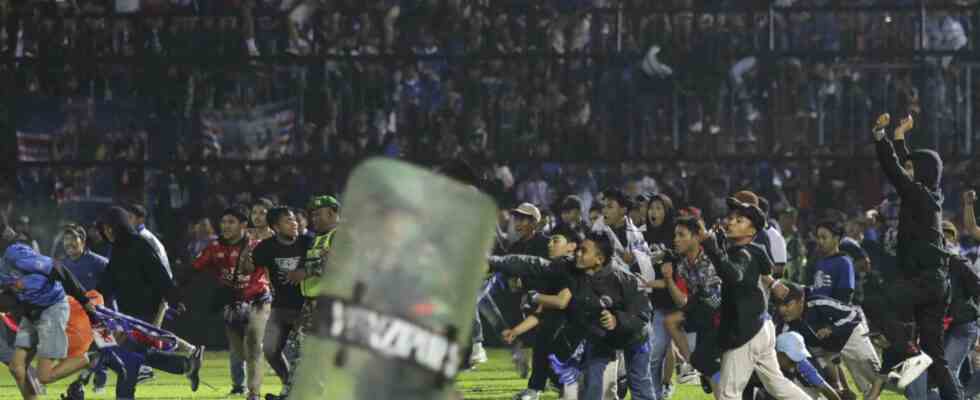Indonesian President Joko Widodo on Sunday (October 2nd) ordered an investigation into the security of football matches in the country after the death of at least 129 people in a stampede caused by clashes between supporters and the police on Saturday evening.
The minister of sports and youth, the national police and the head of the Indonesian National Football Association must carry out “a comprehensive assessment of football matches and security procedures”said the head of state of Southeast Asia in a televised speech.
The drama unfolded after a game on Saturday night at Kanjuruhan Stadium in Malang, East Java, Indonesia. Fans of the Arema FC team entered the field after their team’s defeat (3-2) against that of Persebaya Surabaya, in the Indonesian Premier League. It was the first time in more than twenty years that Arema FC had lost to their great rival. Several fights between fans of the two teams were then reported inside the stadium.
The police, who called the event a“riots”, tried to persuade supporters to return to the stands and fired tear gas after the death of two police officers. Many victims were trampled to death.
“In the incident, 127 people died [un bilan ensuite réévalué], two of whom were police officers. Thirty-four people died inside the stadium and the rest died in hospital.local police chief Nico Afinta first explained in a statement. “At one point, they headed for the exit. But there’s been a build-up [de personnes] and, in this process of accumulation, [les gens] gasped, lack of oxygen”he explained.
More than 300 injured were rushed to nearby hospitals, but many died en route or during treatment, Afinta said.
Footage shot inside the stadium shows a huge amount of tear gas and people clinging to the barriers, trying to escape. Others carried injured bystanders, pushing their way through the chaos. Sunday morning, near the stadium, charred vehicles, including a police truck, littered the streets.
The government apologizes
The Indonesian government apologized for this tragedy and promised to investigate the circumstances of this crowd movement. “We are sorry for this incident. (…) It is a regrettable incident that hurts our football at a time when fans can watch a game in a stadium.”Indonesian Sports and Youth Minister Zainudin Amali told Kompas TV.
“We will thoroughly examine the organization of the match and the number of supporters [dans le stade]. Will we ban the presence of supporters at matches again? We’ll discuss it »he added.
Mea culpa also on the side of the Football Association of Indonesia (PSSI), which suspended all matches scheduled for this week. “We are sorry and we apologize to the families of the victims and to all parties for this incident”, said the president of PSSI, Mochamad Iriawan. She banned Arema FC from hosting home matches for the rest of the season and said she would send a team of investigators to Malang to establish the cause of the crash.
Fan violence is a problem in Indonesia, where long-running rivalries have turned into deadly clashes. Some matches – the biggest being the Old Indonesia Derby between Persija Jakarta and Persib Bandung – are so tense that players from top teams have to go there under heavy protection.
From the drama of Heysel, in Belgium (39 deaths in 1985), to that of Sheffield, in the United Kingdom (97 deaths in 1989), the history of world football is enamelled with tragedies due to fights between supporters and to movements of panic. One of the deadliest took place in 2001 at a stadium in Accra, Ghana, where a stampede left 127 people dead. There too, the police had fired tear gas at angry supporters, causing scenes of panic.

